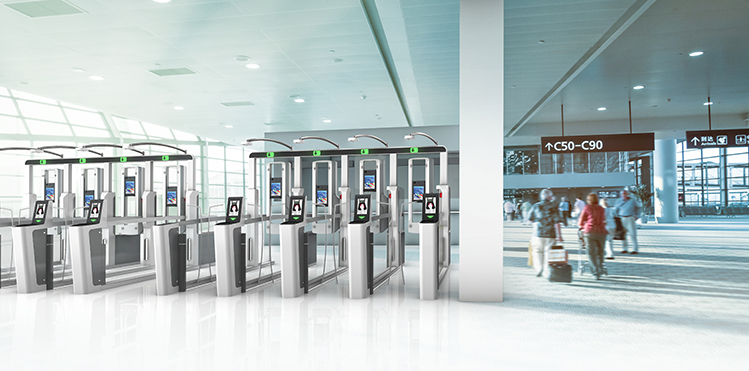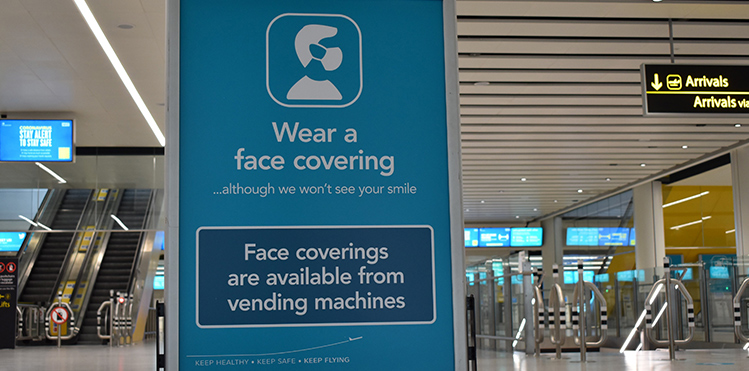Automated Border Control, enhanced COVID-19 protective measures, smart technology, and a contactless airport experience are among the innovations being implemented by airports. Report by Ross Falconer
Munich Airport turns to AeroParker to drive improved car parking and ancillary pre-booking

AeroParker, the ecommerce platform for airports, has been contracted to future-proof the online car parking and ancillary pre-booking at Munich Airport.
AeroParker, the ecommerce platform for airports, has been contracted to future-proof the online car parking and ancillary pre-booking at Munich Airport.
As AeroParker rolls out at Munich throughout 2020 and beyond, Munich Airport will benefit from AeroParker’s dynamic demand-based pricing, subscription parking, the selling of ancillaries such as lounges, e-charging, car wash and a valet service in the same single basket, a configurable loyalty programme, customer account management with cancellation and refund, BI with extensible dashboard reporting and REST API integration with third parties – all for an enhanced customer experience.
At Munich Airport, AeroParker will be integrated with SKIDATA’s sweb interface to the latest version of Parking.logic and the most up-to-date version of Wirecard as a Payment Service Provider.
AeroParker will also integrate with Park.Aero, an initiative of German, Swiss and Austrian airports to provide pre-book pricing and availability for Munich Airport that enables passengers to pre-book parking via the Park.Aero website.
“We are very pleased to welcome Munich Airport as an AeroParker customer,” says Jon Keefe, CEO AeroParker. “It shows that long-time advocates of pre-booking such as MUC can also benefit from the many innovative AeroParker features.”
Peter Bayer, Head of Services and Parking, Munich Airport, comments: “We are very pleased to have signed the contract with AeroParker. To be able to offer the improved, world-class car parking and ancillary pre-booking experience that AeroParker brings is great news for our customers.”
Now mainstream: Automated Border Control

Over 350 secunet easygates are already in use at major international airports. The latest systems to be installed are those at the airports of Vilnius, Budapest, Debrecen, Warsaw Chopin, and Warsaw Modlin.
Today, over 350 secunet easygates are already in use at major international airports, including in Germany, Austria, the Czech Republic and Iceland. The latest to be installed are in Lithuania, Poland and Hungary. Automated Border Control systems can help to avoid increased workloads and waiting times resulting from further increasing passenger numbers and the introduction of the European Entry/Exit System.
In combination with electronic identity documents, eGates, Automated Border Control systems like the secunet easygate, enable border control to be largely automated. The majority of passengers who previously had to stand in queues at the border control counter can now, therefore, undertake the border crossing by themselves.
The automated process is extremely simple and has now been promulgated worldwide. Passengers are, therefore, increasingly familiar with it: the secunet easygate checks the authenticity of the electronic identity document presented both optically and electronically. In addition, the system reads the facial image of the traveller from the chip in the electronic identity document and compares the biometric data with the live image of the individual. This all takes place in a very short amount of time. Travellers have already used secunet easygates around 100 million times. The latest systems to be installed are those at the busy international airports of Vilnius, Budapest, Debrecen, Warsaw Chopin, and Warsaw Modlin.
All parties involved benefit from automation – border officials mainly monitor the process on screens and can focus on those passengers where further investigations are necessary, airports benefit from higher passenger numbers, and travellers enjoy shorter waiting times.
Gatwick Airport introduces COVID-19 protective measures as it reopens North Terminal

London Gatwick Airport has introduced a range of measures to protect the wellbeing and safety of both passengers and staff. The airport reopened its North Terminal on 15 June.
London Gatwick Airport has introduced a range of measures to protect the wellbeing and safety of both passengers and staff. The airport reopened its North Terminal on 15 June, with airlines starting to scale-up their flying programmes.
The wellbeing and safety of passengers and staff remains Gatwick’s top priority and extensive measures in place throughout the airport to “protect each other” include face mask vending machines, hand washing facilities and hand sanitising stations, enhanced deep cleaning of common-use surfaces, social distancing procedures, and the installation of Perspex screens throughout the terminals.
In addition to passenger guidance online – available on Gatwick’s website and app – digital and physical signage advising passengers of the new health measures is displayed throughout the airport.
“Having remained open throughout this pandemic, the wellbeing and safety of our passengers and everyone that works at the airport remains our top priority,” says Stewart Wingate, Chief Executive, Gatwick Airport. “We have introduced a range of new social distancing and hygiene solutions to help this happen, so we can all help protect each other when travelling through the airport. We want people to understand that airports and air travel is a safe environment in this COVID-19 travelling world.”
Smart technology fundamental to resumption of air travel

SITA is rapidly rolling out new solutions complementing short-term hygiene measures such as the use of masks and gloves. These solutions centre on three key areas: distancing, hygiene and sanitation, and health checks.
SITA has shed new light on how technology is helping airports and airlines safely resume operations and help implement new hygiene measures to restore passenger confidence after a lengthy shutdown due to the COVID-19 pandemic.
“Our industry must transform the passenger experience to increase traveller safety, while balancing economic pressures from slow customer demand,” says Sebastien Fabre, Vice-President Airline & Airport, SITA. “To successfully walk this tightrope and navigate a return to the skies for viable volumes of passengers, airports and airlines need to assimilate new information from governments and health officials, adapt operations immediately and automate processes permanently.”
SITA has introduced solutions that allow passengers to use their mobile device as a remote control for touchpoints such as self-bag drop and check-in kiosks, removing the need to touch any airport equipment. “For example, at San Francisco Airport, we have SITA Flex which in future will enable a full mobile and touchless passenger journey. This means travellers can print bag tags from their mobile phone on self-service bag points,” Fabre adds.
Bengaluru Airport introduces “parking-to-boarding” contactless airport experience
Bangalore International Airport Limited (BIAL) has introduced a parking-to-boarding contactless journey at Kempegowda International Airport, Bengaluru (BLR Airport).
With greater emphasis on minimum exposure between passengers and airport staff, BIAL aims to minimise all physical contact at the airport. The technology will enable a seamless airport journey, with greater emphasis on health and safety.
As part of the new procedures, passengers are required to wear face masks and carry an e-/printed-boarding pass. Once inside the terminal, passengers scan their boarding pass at a contactless self-service kiosk and use automated self-bag-drop facilities. In addition, travellers must follow the safe distance markers placed on the floor. At the departure gates, passengers will undergo a thermal scan.







